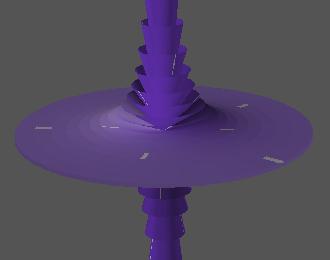NOTE Here are the schedules for TWIGS
Fall 2002, TWIGS Spring 2003, TWIGS Fall 2003, and TWIGS Spring 2004.
Fall Schedule
Abstracts
27 September
Ivan Mirkovic, UMass Amherst
What is a triangulated category?
Abstract
Loosely speaking, Homological Algebra is a mechanism
for systematic use of the ``hidden'' information on mathematical
objects. The notion of a triangulated category provides the standard
setting for homological algebra. A simple example is that if one tries
to extend the the duality for finite dimensional vector spaces to
modules over a given ring, there are obvious problems and it does not
work. However, if one looks at a larger picture, a suitable
triangulated category of modules, there is a satisfactory duality. The
moral is that the right object to look at (in various situations) is
the triangulated category. This lesson has been driven home by
discovery that seemingly very different mathematical settings may have
the same triangulated category, which makes them for practical
purposes the same.
29 September
Farshid Hajir, UMass Amherst
What Is MathSciNet?
Abstract
When you want to study a mathematical problem, how do
you determine what is already known about the problem? Since 1940,
the AMS has been maintaining a database of short (and sometimes
not-so-short) reviews of mathematical publications called the Math
Reviews. Certain European archives date even further back. When I
was a graduate student, I spent quite a bit of time in the library
becoming familiar with the intricacies of navigating the Math Reviews.
These days, all the Math Reviews are available via an internet service
known as MathSciNet. I'll talk about various cool features of this
most useful research tool.
6 October
Tom Weston, UMass Amherst
What is cohomology?
Abstract
Cohomology is a tool for converting mathematics
(which is hard) into linear algebra (which is relatively
easy). Although there are many different kinds of cohomology
in all different fields of mathematics, all cohomology
theories share various formal similarities. In this lecture
we will attempt to illuminate these general properties via
the specific examples of singular homology and group
cohomology.
TOP
13 October
Robin Young, UMass Amherst
What is a shock wave?
Abstract
I will describe shock waves and simple waves in one-dimensional
systems of conservation laws, and describe some of their
interactions. We will mostly consider the coupling between different
fields and show how multiple wave interactions can lead to
nonexistence of solutions.
TOP
20 October
Farshid Hajir , UMass Amherst
What Is the Herglotz Trick?
Abstract
I'll describe a very neat idea of Gustav Herglotz (an
important mathematical physicist and analytic number theorist) for
proving an infinite-series representation of the cotangent function,
followed by some applications of the formula to evaluating the
Riemann Zeta Function at even positive integers.
27 October
Luc Rey-Bellet, UMass Amherst
What Is Entropy?
Abstract
The answer to the question is: "I am not
sure". Entropy is a somewhat vague concept in the sense that the word
is used to name various objects in very different situations. Quite
generally entropy can be seen as a quantitative measure of
"information". I will illustrate this concept by considering several
examples from various fields.
10 November
Amit Khetan, UMass Amherst
What Is Lagrange Inversion?
Abstract
Generating functions are powerful tools to record and compute
combinatorial data. Here we give a formula to find the "compositional
inverse" of a generating function. As an example we derive the famous
Cayley Prufer formula counting the number of trees on n nodes.
17 November
Jessica Sidman, Mt. Holyoke
What Is A Rational Normal Scroll?
Abstract
Rational normal scrolls are an important family of examples in algebraic
geometry. I will show how to construct a scroll from two rational normal
curves. I will also discuss how to think about a rational normal scroll
as a determinantal variety and as a toric variety.
The picture above was created by
Paul Gunnells.
It visualizes the natural action of the group
of units of a complex cubic field on 3-space.
Consult
Paul for more details.
Last modified: Feb 2004 by
Farshid Hajir


 The Seminar meets on most Wednesdays, 3:00-4:00
in 1634 LGRT.
The Seminar meets on most Wednesdays, 3:00-4:00
in 1634 LGRT.
 Driving Directions and
Campus Maps
Driving Directions and
Campus Maps
 Overview of the Seminar
Overview of the Seminar
